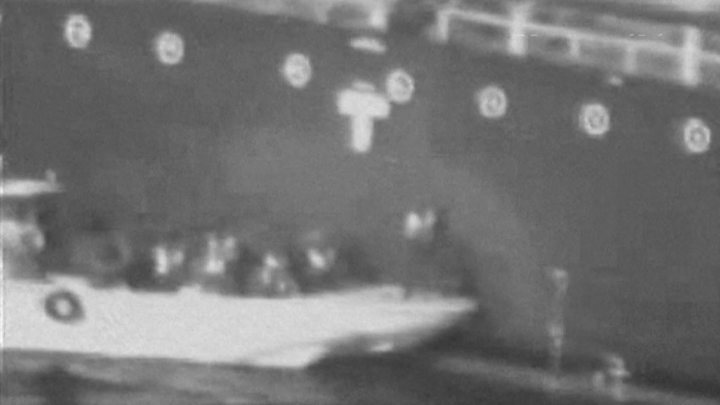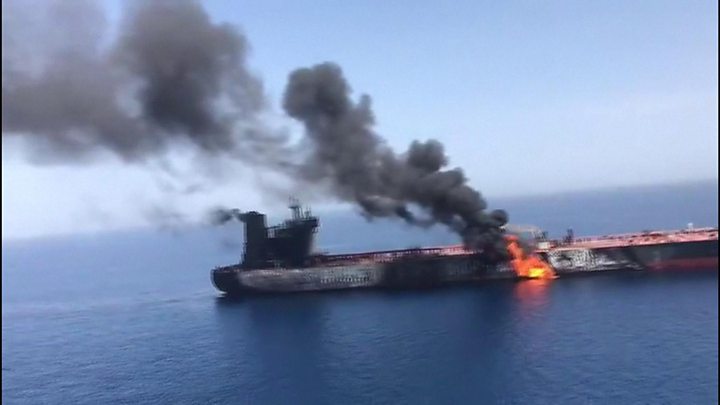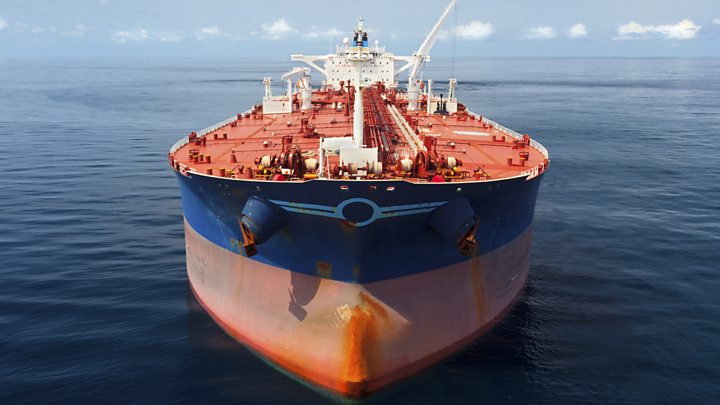Home » Middle East »
Saudis urge ‘decisive’ response to tanker attacks
Saudi Arabia has urged a “rapid and decisive” response to recent attacks on oil tankers in the area.
Energy Minister Khalid al-Falih warned of a threat to energy supplies and market stability.
On Thursday two tankers were attacked in the Gulf of Oman, a month after four others were targeted off the coast of the United Arab Emirates.
The US has blamed Iran, which denies any involvement. The attacks come amid increasing tensions between the two.
Oil prices jumped as much as 4% after Thursday’s incident.
On Saturday, the head of the world’s biggest international shipping association said some firms have ordered their ships not to enter the Strait of Hormuz and the Gulf of Oman as a result of the attacks.
Jakob Larsen, head of maritime security at BIMCO, told the BBC military escorts for tankers could be organised if the situation worsened.
The US has produced a video it suggests shows Iranian forces in a small boat taking an unexploded mine off the hull of one of the ships following Thursday’s attacks. But it has not provided evidence for Iran’s alleged involvement in the previous attacks within UAE territorial waters.
Relations between the US and Iran have deteriorated significantly since US President Donald Trump took office in 2017. He abandoned a nuclear deal and significantly tightened sanctions on Iran.
The footage released by the US on Thursday is rather more convincing than the circumstantial evidence it had provided earlier.
The small white patrol craft in the video is typical of the type used by Iran’s IRGC (Revolutionary Guards) Navy in the Gulf. In recent years, the IRGC Navy has steadily supplanted Iran’s conventional navy all along Iran’s Gulf coast, from its border with Iraq in the north all the way down to Pakistan and the Arabian Sea. Its forces have built up a formidable flotilla of small, high-speed, hard-to-detect attack craft armed with mines, missiles, torpedoes and drones.
IRGC commandos regularly practise covert operations and simulated attacks. Some of their craft have come in close proximity to US Navy warships in the Gulf in recent years and there remains the risk of a clash at sea.
Iran has denied any involvement in Thursday’s attacks, saying they were carried out by someone looking to derail Iran’s relations with the international community. There will likely be doubts in Tehran as to whether this video is genuine.
What we know about Thursday’s explosions
According to the US account of events, US naval forces in the region received distress calls from the Norwegian-owned Front Altair at 06:12 (02:12 GMT) and from the Japanese-owned Kokuka Courageous at 07:00, following explosions, and moved towards the area.
It said the USS Bainbridge observed Iranian naval boats operating in the area in the hours after the explosions, and later removing the unexploded mine from the side of the Kokuka Courageous.
The crews of both vessels were evacuated to other ships nearby. Both Iran and the US later released pictures showing rescued crew members on board their vessels.
BSM Ship Management, which manages the Kokuka Courageous, said the ship’s crew abandoned ship after observing a fire and an unexploded mine.
However Yutaka Katada, the president of the ship’s operator, Kokuka Sangyo, said members of the crew had reported “that the ship was attacked by a flying object”.
The Kokuka Courageous was about 30km (20 miles) off the Iranian coast when it sent its emergency call.
The Front Altair was carrying naphtha, a petrol product, from the United Arab Emirates to Taiwan. The Kokuka Courageous was carrying methanol from Saudi Arabia to Singapore.
According to global satellite monitoring company Iceye, the damage to the Front Altair caused some oil spill in the waters around the ship.
Why are US-Iran tensions so high?
In 2018, the US pulled out of the landmark nuclear deal reached in 2015 that was aimed at curbing Iran’s nuclear activities. The move was strongly criticised by a number of countries, including the closest allies of the US.
In May, President Trump tightened US sanctions on Iran – mainly targeting its oil sector. Iran then announced it would suspend some commitments under the nuclear deal.
In recent months, the US has strengthened its forces in the Gulf – saying there was a danger of Iranian attacks. It sent an aircraft carrier strike group and B-52 bombers to the region.
In response, Iran accused the US of aggressive behaviour. Those tensions rose markedly after the 12 May limpet mine attacks in the UAE.
The UAE blamed an unnamed “state actor”. The US said that actor was Iran, an accusation Tehran denied.
While it is unclear why Iran would carry out a relatively low-level attack on the multinational tankers, observers have speculated that it could have been to send a signal to forces ranged against it that it is capable of disrupting shipping there without triggering a war.
Source: Read Full Article





